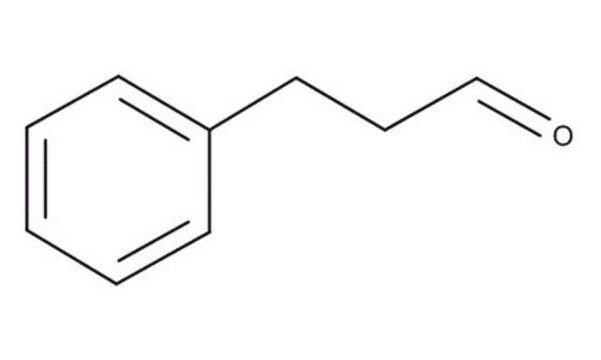107395
Phenylacetaldehyde
≥90%
Synonym(s):
α-Tolyaldehyde
About This Item
Recommended Products
Quality Level
Assay
≥90%
refractive index
n20/D 1.535 (lit.)
bp
195 °C
mp
−10 °C (lit.)
solubility
H2O: slightly soluble
alcohol: soluble
diethyl ether: soluble
density
1.027 g/mL at 25 °C
functional group
aldehyde
phenyl
storage temp.
2-8°C
SMILES string
O=CCc1ccccc1
InChI
1S/C8H8O/c9-7-6-8-4-2-1-3-5-8/h1-5,7H,6H2
InChI key
DTUQWGWMVIHBKE-UHFFFAOYSA-N
Looking for similar products? Visit Product Comparison Guide
Application
Biochem/physiol Actions
Other Notes
Signal Word
Danger
Hazard Statements
Precautionary Statements
Hazard Classifications
Acute Tox. 4 Oral - Aquatic Chronic 3 - Eye Dam. 1 - Skin Corr. 1B - Skin Sens. 1A
Storage Class Code
8A - Combustible corrosive hazardous materials
WGK
WGK 1
Flash Point(F)
154.4 °F - (External MSDS)
Flash Point(C)
68 °C - (External MSDS)
Personal Protective Equipment
Choose from one of the most recent versions:
Certificates of Analysis (COA)
Don't see the Right Version?
If you require a particular version, you can look up a specific certificate by the Lot or Batch number.
Already Own This Product?
Find documentation for the products that you have recently purchased in the Document Library.
Our team of scientists has experience in all areas of research including Life Science, Material Science, Chemical Synthesis, Chromatography, Analytical and many others.
Contact Technical Service









